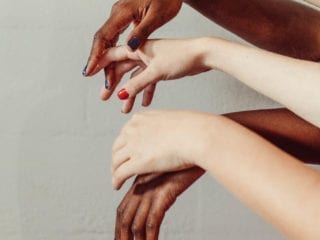This post was originally published on December 15, 2017.
Can you imagine feeling as though you were forced to constantly choose which part of your identity represented you the most?
Or, even worse, if someone else got to decide when your feelings and observations were valid based on what and who they felt you were? What if someone tried to help you without considering the various factors in your life that affected you?
In the 1976 case of DeGraffenreid v. General Motors, Black female employees faced all of these questions when they sued General Motors. They argued that they were facing compounded discrimination because of their race and gender. The court responded by citing evidence that Black men were given jobs at the company as factory workers and, therefore, the company was not using racial discrimination. Furthermore, since white women were also employed in office and secretarial jobs, the company was not discriminating against anyone based on sex.
On these terms, the court was able to dismiss the claim of compound discrimination and dismiss the case as a whole.

This case has become famous amongst gender and race scholars because of Professor Kimberlé Crenshaw’s extensive work on this kind of compound discrimination and her development of intersectional theory. Although the notion of intersectionality has always existed, Crenshaw was the first to coin the term through her analyses of overlapping identities and their relation to overlapping systems of discrimination and disadvantage.
In reading about DeGraffenreid v. General Motors now, it’s easy to be amazed that such a decision was made in the case; it’s almost laughable that the court would be unable to see how flawed their argument was. However, the truth is that this lack of understanding of intersectionality, which seems so obvious to many of us, continues to have very real consequences to this day.
I notice these consequences most when I think of the attempts many have made to help a cause without thinking through the various circumstances that can affect people very differently. It sounds like an obvious point—that in order to help people, you should think about the different factors that affect them—but now you’ll probably start to notice more and more how often this is disregarded.
It sounds like an obvious point—that in order to help people, you should think about the different factors that affect them.
Take, for instance, the way many people speak about the wage gap that exists between men and women. Of course, you’ll often hear from those who are in complete denial that a wage gap even exists, but you’ll also hear from those who are in a second category of denial and might cite something like, “women make 79 cents for every dollar a man earns.”
If you’re not driven to ask which women and which men are we talking about here, then you’re living in this second group of denial. It’s a group that somehow believes that all women and all men, for that matter, exist equally in this world; that there are no other factors that might influence pay. If we try to solve issues of inequity while living in this second kind of denial, then there is very little that can be done to actually fix the problem. We might feel like we’re helping, but without considering various factors and therefore various people, we may very well be doing more harm than good.

We might feel like we’re helping, but without considering various factors and therefore various people, we may very well be doing more harm than good.
Anyone who is concerned with the wage gap should consider the finding that, according to Business Insider, for every dollar a white man makes on average in America, Asian women make 84% of that on average, white women makes 75% of that on average, Black women make 60% of that and Hispanic women make 55% of that. They should then ask how these numbers might change when we consider those who do not identify with the binary, those who live with disabilities or those who might also be facing discrimination based on their religion.
The more information we know, the more accurate our attempts will be to address any issue.
The bottom line is that understanding intersectionality consists of a few different steps. First, we must accept the fact that our identities are inextricable from each other; they cannot be separated. Second, as a result of such inextricable identities, we must acknowledge that our circumstances are different from another person’s. Third, we must accept the simple truth that the more layers of oppression that are present in a person’s life as a result of the way society operates, then the more important it is to include such voices and equitably address such needs.
Intersectionality exists, and there can be no denial of it if we truly desire to move closer to understanding, solutions and change.
Here are some good readings to start with for understanding intersectionality:
“Women, Race, & Class” by Angela Y. Davis
“Ain’t I a Woman?” by Sojourner Truth
“Mapping the Margins: Intersectionality, Identity Politics, and Violence Against Women of Color” by Kimberle Williams Crenshaw
“This Bridge Called My Back” by Cherríe Moraga and Gloria Anzaldúa
How would you explain intersectionality to someone who may not understand it or has never heard of it? What has help you understand intersectionality and its importance?
Image via Rick Bhatia










